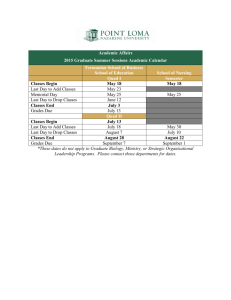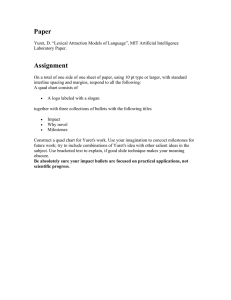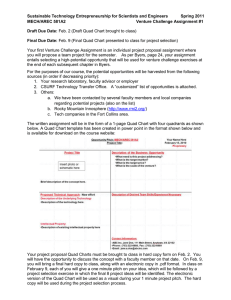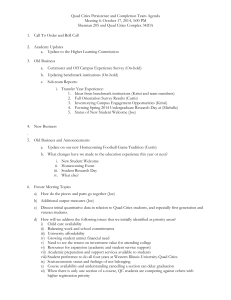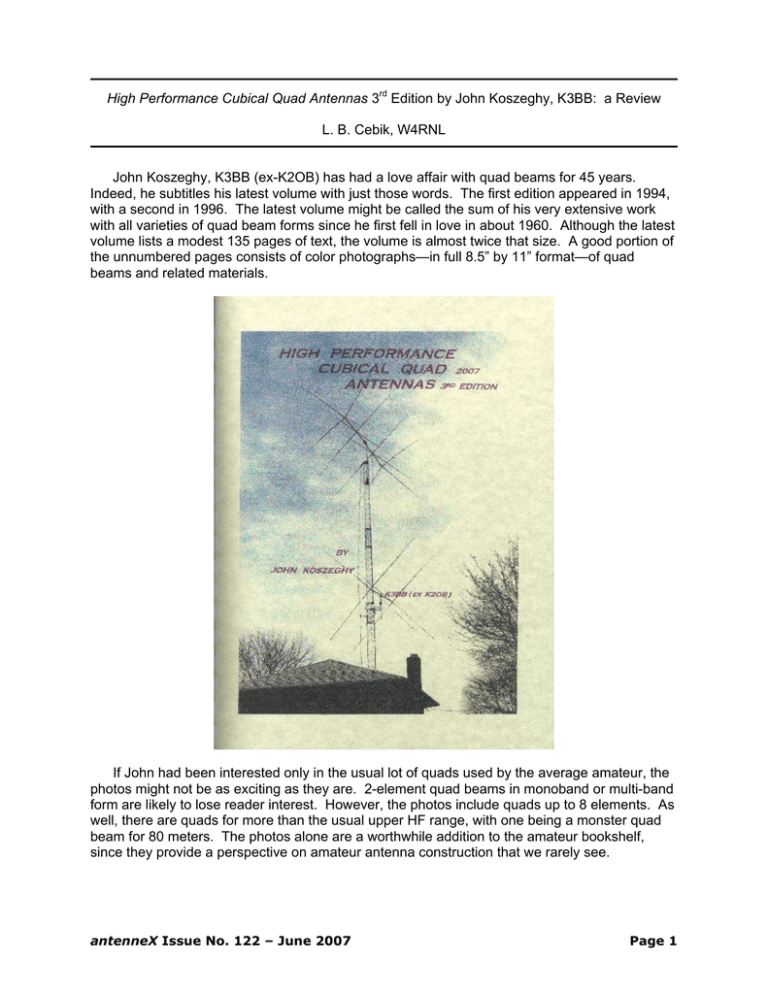
High Performance Cubical Quad Antennas 3rd Edition by John Koszeghy, K3BB: a Review
L. B. Cebik, W4RNL
John Koszeghy, K3BB (ex-K2OB) has had a love affair with quad beams for 45 years.
Indeed, he subtitles his latest volume with just those words. The first edition appeared in 1994,
with a second in 1996. The latest volume might be called the sum of his very extensive work
with all varieties of quad beam forms since he first fell in love in about 1960. Although the latest
volume lists a modest 135 pages of text, the volume is almost twice that size. A good portion of
the unnumbered pages consists of color photographs—in full 8.5” by 11” format—of quad
beams and related materials.
If John had been interested only in the usual lot of quads used by the average amateur, the
photos might not be as exciting as they are. 2-element quad beams in monoband or multi-band
form are likely to lose reader interest. However, the photos include quads up to 8 elements. As
well, there are quads for more than the usual upper HF range, with one being a monster quad
beam for 80 meters. The photos alone are a worthwhile addition to the amateur bookshelf,
since they provide a perspective on amateur antenna construction that we rarely see.
antenneX Issue No. 122 – June 2007
Page 1
To understand the text of the book requires some insight into John’s perspective on antenna
design, perspective developed from long years as a test engineer for Grumman (now NorthrupGrumman). His work does not start with computer models, although you will find numerous
post-facto models in the volume. Instead, it emerges from patient empirical design,
construction, and test procedures. Indeed, part of his experience includes the evolution in
testing procedures over the years, an evolution that has allowed him to refine his designs and to
expand the designs with which he works.
In antenna labs, the use of scaled VHF and UHF antennas often serves as the fundamental
test bed for antennas ultimately intended for HF use. John is intimately familiar with such
techniques, but the bulk of his work has consisted in constructing—and reconstructing—full size
antennas, with a primary focus on the 20-meter amateur band. His test notes beginning on
page 122 provide specific details of his test procedures, along with results that include both
numerical data and other results of specific interest to users of the antenna.
The first chapter traces the history of John’s involvement with quad antennas, as he moved
from initial 2-element box (square) and diamond designs to 3- and 4-element quads. In the
process, he experimented with octagonal elements and also with quad stacks, as suggested by
the cover photograph for his book. His most intensive period of design testing occurred in the
late 1990s, with experiments on 11 full-size 20-meter monoband quad beams.
Chapter two contains many of the results that John obtained from his extensive building and
testing efforts over the years. He discovered that “boom length translates into gain . . . until gain
fold over occurs with excessive boom length.” (page 7) Later in the chapter, the author provides
tables and graphs of quad performance results that indicate a nearly linear growth of boom
length from 2 to 7 elements of 0.2-λ up to 2.0-λ. The corresponding gain graph has a modest
curve indicating that there is a practical limit to the addition of further elements.
One of the outcomes of John’s continual experimentation is a set of recommendations for
the size of the loops in quad beams ranging from 2 to 5 (and more) elements. For reader
convenience, he summarizes these results in a series of formulas limited to AWG #12 through
AWG #16 wire. He provides separate formulas for bare and insulated wire. Over the next two
pages, I have reproduced these handy tables for calculating quad element loops. The quality of
the reproductions suffers from using scanning methods to obtain them. In the book, they are
very crisp and clear.
The loop-cutting tables apply to the element spacing values that John obtained from his long
series of experiments in the 1990s. Through the 1980s, quad builders had tended to use a very
limited set of 20-meter element spacing values, usually involving increments of 8’ or 10’
between elements in various combinations. John’s work resulted in various non-standard
combinations of spacing values, especially between the driver and the first director and again
between the first and second directors. As he changed the spacing values, he adjusted the
required loop sizes to obtain maximum gain from the array. The second chapter traces these
experiments to provide the reader with a good idea of the methods used to obtain top
performance from his arrays.
The chapter also includes a number of practical construction and operational
recommendations. Among them is the preference for using 72-Ω matching sections between
the driver loop and the main feedline in lieu of either wound coaxial chokes or balun devices.
The latter two items he found could modify driver performance. At the end of the chapter, he
provides some guidance for the newer amateur just entering the world of quad antennas. His
antenneX Issue No. 122 – June 2007
Page 2
own extensive operating experience suggests that approximately 11% of the DX operators
around the world use quad beams.
Chapter 3 contains an interesting survey of the perennial quad-vs.-Yagi question. The
survey includes the reports of a number of trusted hams who were able to compare directly
quads and Yagis over long and short DX paths. Although John loves quads, he does not
varnish the results to favor his preferred antenna. Instead, he lets the reports show that the
debate has no definitive resolution. Although some claim that quads are quieter than Yagis,
experience with rain static suggested that sometimes one, sometimes the other type of antenna
excelled. A similar indecisive result appears with band openings and closings that early quad
users claimed in favor of quads. Most of the reports involve well-designed and constructed
monoband beams of both types. If any advantages emerged for beams of equal boom length,
then the gain margin went to the quad, while the rearward performance went to the Yagi.
Although this note seems to give away the chapter’s theme, the details of the individual reports
are of considerable interest for anyone who tracks the history of beam development.
antenneX Issue No. 122 – June 2007
Page 3
Chapter 4 traces John’s experiments with 80- and 40-meter quads and delta loops,
beginning with single loops and progressing—through his own work and the work of equally
enthusiastic DX quad lovers—to both quad beams and collinear forms of beams. His initial
work has convinced John that box and diamond quad loops are superior on the lower bands to
apex-up delta loops, although he would not for a moment discount the utility of even the simple
sloper for the low bands.
The final two main chapters are devoted to the conclusions John has drawn since his
earliest work in the 1960s up to the present. The 35 numbered conclusions, abetted by
extensive graphical data, are too complex to note here, since they cover many basic and refined
aspects of quad design and construction. After some basic facts, John addresses issues of
antenna resonance (including multiple resonant points within a band) and HF pattern
acquisition. Perhaps his penultimate conclusion—actually a recommendation—sums up his
antenneX Issue No. 122 – June 2007
Page 4
entire approach to quad antennas: “Experiment and try new concepts—in all cases, record your
antenna dimensions, antenna height, weather conditions, the test instrumentation and the data.”
(page 70) The shorter list of recommendations in Chapter 6 contains highly practical
suggestions for successful quad building, whether one uses a box or diamond configuration.
They include both fundamental structural issues and simple ideas for quad longevity, such as
capping the ends of spreaders.
The remaining pages of the volume equal in number the main text. They contain practical
notes and experimental results on a large variety of relevant quad questions on subjects like
performance measurement techniques, quad phasing, and element wire questions. One
section details the specifications for advanced quad design ranging from two to seven elements.
The designs include element spacing values as well as loop dimensions and provide examples
of the optimized values developed during John’s research. For example, one 5-element 20meter design uses 10’ from reflector to driver, with 13 feet to director 1, 15 feet to director 2 and
20 feet to director 3 for a total boom length of 58 feet.
The next two sections of the appendix contain graphical data and text related to the
extensive work John did with determining to optimal boom lengths for various numbers of quad
elements. The sample graph is typical of the series and shows what John means by gain fold
over when boom length becomes excessive. However, for most quad builders, the tendency is
antenneX Issue No. 122 – June 2007
Page 5
the opposite: to try to use too short a boom for the number of elements in the design and hence
to loose significant gain potential from the array. (Again, scanning reduces the clarity of the
graphic relative to its crispness in the volume.)
The appendices cover other topics, such as design comparisons, feed methods, and details
of the test methods used by K3BB. The last especially is essential reading to frame properly the
data and conclusion in the book.
The final section of the book is devoted to photos and sketches of antennas used by John
and by a host of amateurs throughout the world. Beginning on page 135, this section of the
book holds its own fascination for anyone who has admired complex antennas against the sky.
A single sample will have to do to introduce this part of the volume.
I shall close this review with the observation that K3BB’s Quad volume has preserved an
important place in quad literature in its new and revised edition. However, to obtain a copy, you
will have to contact John directly:
John Koszeghy, K3BB
23603 Abercorn Lane
Land O Lakes, FL 34639-8818
e-mail: joniko@verizon.net
Click for Biography of LB Cebik
antenneX Online Issue No. 122 — June 2007
Send mail to webmaster@antennex.com with
questions or comments.
Copyright © 1988-2007 All rights reserved antenneX©
antenneX Issue No. 122 – June 2007
Page 6

